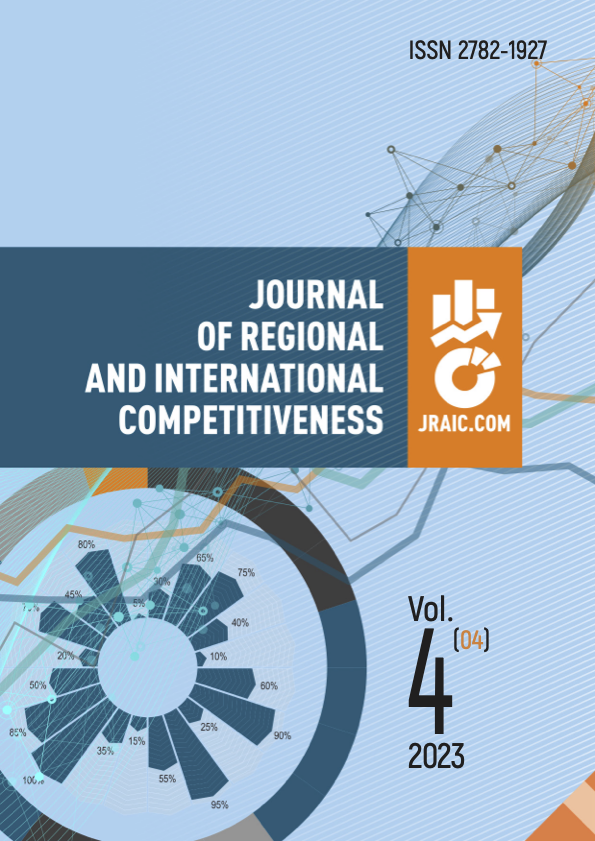Yaroslavl, Yaroslavl, Russian Federation
Kazan, Kazan, Russian Federation
Yaroslavl, Yaroslavl, Russian Federation
Yaroslavl, Yaroslavl, Russian Federation
The paper characterises the elements of compliance certification in the context of ensuring independent conformity assessment and improving product quality. The authors described the features of adapting a new model of compliance certification on the example for a regional certification body, which go beyond the traditional conformity assurance system. The paper discusses the essence of the compliance certification system, levels and types of compliance system, and prerequisites for its adaptation in certification. The research recommendations for the development and implementation of compliance certification in manufacturing plants are based on the results of a single-factor variance analysis. It allows ones to assess the production process reproducibility. The study of manufacturing process stability reveals the potential inclusion of vegetable fats in the products under study. The authors analysed the reproducibility using an event tree. This tree identified the main production control parameters. The authors show the risk of added vegetable oils presence in the raw materials at the homogenisation, pasteurisation, and fermentation stages. The analysed data on statistical stability and reproducibility assessment suggest the necessity to provide conditions for the software development and implementation for monitoring of production processes in order to implement the principles of compliance certification on the basis of the selected production enterprise. The implementation of compliance certification system increases the competitiveness of products, ensuring reliability and quality.
CERTIFICATION COMPLIANCE SYSTEM, ORGANISATION ACTIVITY, CERTIFICATE OF CONFORMITY, CONFIRMATION OF CONFORMITY, ONE-FACTOR VARIANCE ANALYSIS, STATISTICAL STABILITY AND REPRODUCIBILITY OF TECHNOLOGICAL PROCESSES
1. Bataeva, B. S., & Cherepanova, V. A. (2017). Prospects of compliance development as a means of improving corporate governance in Russian companies. Economy. Taxes. Law, (5), 30-36. Retrieved from http://www.fa.ru/org/div/edition/enp/journals/2017%20%E2%84%965.pdf (accessed 24.01.2024) (in Russian).
2. Gvozdeva, S. M. (2010). Certification as a tool for improving product quality, Izvestiya Saratovskogo universiteta, Ser. Ekonomika. Upravlenie. Pravo, 10(1), 63-67. Retrieved from https://www.sgu.ru/sites/default/files/journals/izvestiya/pdf/2013/12/13/gvozdeva.pdf (accessed 24.01.2024) (in Russian).
3. Aydynov, R. E., & Grosheva, N. B. (2020). Certification activity: relevance and examples, Biznes-obrazovanie v ekonomike znanij, (3), 5-12. Retrieved from https://cyberleninka.ru/article/n/sertifikatsionnaya-deyatelnost-aktualnost-i-primery (accessed 12.09.2023) (in Russian).
4. Burby, R. J., May, P. J., & Paterson, R. C. (1998). Improving compliance with regulations: Choices and outcomes for local government. Journal of the American Planning Association, 64(3), 324–334.
5. Governatori, G., Hoffmann, J., Sadiq, S., & Weber, I. (2017). Detecting regulatory compliance for business process models through semantic annotations. In Proc. Int. Conf. “Business Process Management” (Barcelona, Spain, 10–15 September, 2017), 5–17. Retrieved from https://www.researchgate.net/publication/43528483_Detecting_Regulatory_Compliance_for_Business_Process_Models_through_Semantic_Annotation (accessed 12.09.2023).
6. Berezina, N. A. (2014). Modeling of technological processes of food production. Retrieved from https://elib.oreluniver.ru/media/attach/note/2014/Berezina_modelir_tehnologich_protsessov%20.pdf (accessed 10.10.2023) (in Russian).
7. Frolova, S. V. (2017). Processing of experimental data by the method of dispersion analysis with annual crops. Earth Sciences: Yesterday, Today. In Materialy` III Mezhdunar. nauch. konf. (g. Sankt-Peterburg, iyul` 2017 g.). (pp. 3-7). Sankt-Peterburg: Svoe izdatel`stvo (in Russian).
8. Dedkov, V. K. (2023). Statistical analysis of the factors’ impact on the risks value. 7 p. Retrieved from https://cyberleninka.ru/article/n/statisticheskiy-analiz-vliyaniya-faktorov-na-velichiny-riskov (accessed 10.10.2023) (in Russian).
9. Nisaif, J. (2021). Variance analysis. Albayan university Prof. Dr. nassifaljboory. DOI:https://doi.org/10.13140/RG.2.2.26709.86242 Retrieved from https://www.researchgate.net/publication/348350880_VARIANCE_ANALYSIS
10. Akramova, G. F., & Moroz, G. M. (2016). Identification and evaluation of the quality of ryazhenka, the problem of Falsification. In Tovarovedenie i ekspertiza, proizvodstvo pishchevyh i kormovyh produktov, obespechenie ih kachestva i bezopasnosti. Kazan’, 05–06 aprelya 2016 goda. Kazan’: ANOO VO Centrosoyuza Rossijskoj Federacii “Rossijskij universitet kooperacii” Kazanskij kooperativnyj institut (filial). Retrieved from https://www.elibrary.ru/item.asp?id=26090436 (accessed 10.10.2023) (in Russian).
11. Gorlenko, O. A., Mozhaeva, T. P., & Vavilin, Ya. A. (2016). Statistical analysis of the Ishikawa causal diagram. Metody menedzhmenta kachestva, (10), 44-48 (in Russian).




















